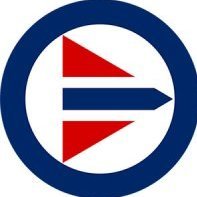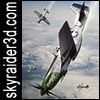Search the Community
Showing results for tags 'Ki-100'.
-
My next project will likely get some attention -- a lot of you have already told me that you're interested in seeing the Fine Molds Ki-100 come together. This was an adaptation of the Ki-61. My reference books have different accounts: one says it was prompted by a shortage of the liquid cooled engines they were using in the Ki-61, another says it was prompted by the un-reliability of the liquid cooled engine. Whatever the reason, they had Ki-61 airframes without engines and the engineers were clever enough to graft a radial engine on the front of them, producing a fighter that was reportedly better than the Ki-61. Ever since I discovered this plane a few years ago, I've really wanted to do a model of it. So here we go! There are some nice options in this kit. I was going to do the one on the cover, but then I saw the alternate schemes: I decided I'm going to do that last one. I had found pictures of the plane on the cover, but when I changed my mind about which one to do, I found I had collected pictures of the one with the blue stripes while I was researching. That' was a nice discovery! The subject in the picture was not terribly worn and had a semi-gloss look to it. So that will be guiding my finishing decisions. The model has very nice surface detail, and some dry fitting shows that it fits together well. Unfortunately, there was quite a bit of flash to trim off the fuselage. Started out with the cockpit, of course: I was very pleased with the Ki-61 Tony I did a few months ago except for the cockpit color, which I found out after the fact was an old modelling trope. @Corsairfoxfouruncle pointed me to @Stew Dapple's Ki-61 Build which had a well thought out interior color. Since I don't have any Colourcoats paints, I mixed some up to match. The recipe was one drop each of Hataka RLM79a (Sand), RLM02 (Yellow) and RLM82 (which is a bright green -- bleah). It matched what was on the screen, but now I'm comparing pictures side-by-side, mine looks a tad more yellow. Still, it is reasonable and beats the Tan color they recommend. That cockpit and landing gear detail is terrific. No scratchbuilding on this one! I'll post better pictures when I do the detail painting. That's all for now -- off to work!
- 42 replies
-
- 15
-

-
Kawasaki Ki-100. This is the only surviving Ki-100, now displayed at Cosford. Pics mine.
-
Happy New Year all! Last year I completed the illustrations for Osprey's Aircraft of the Aces #114 on Ki-61 and Ki-100 Aces, written by Nicholas Millman of http://www.aviationofjapan.com. Since the book has meanwhile been published, I'd like to show you a few samples. Research by Nick and myself. All images © Osprey Publishing. Ki-61-I Otsu of the 78th Sentai: Ki-61-I Tei of the 244th Sentai Detail of the score board: This graphic gives you an idea of the amount of research that goes into each profile: Ki-61-I Hei of the 56th Sentai: Colourful Ki-100-I Otsu of Akeno's 111th Sentai: Ki-100-I Otsu of the 5th Sentai: A close-up of the tail unit and "Nine-headed Dragon" inscription: A Ki-100-I Ko of the 59th Sentai with P-51 victory marking under the cockpit and 3rd Chutai markings on both vertical and horizontal tail planes: Sample line drawing of a Ki-100-I Otsu: For those who are on Facebook, I have an artwork page at https://www.facebook.com/AviationArt.Aero and a group dedicated to the Ki-61/100 at https://www.facebook.com/groups/Ki61Tony/ Many thanks for looking! Ronnie Olsthoorn
- 21 replies
-
- 20
-

-
Aoshima is to release a new 1/72nd Kawasaki Ki-100II Type 5 kit - ref.008706 N°9 Source: http://www.aoshima-bk.co.jp/english/News/2014-7.jpg V.P.
-
Other than group builds I haven't done any WIPs, mainly because sometimes I work very, very slowly, especially when work in the real world (booo) gets in the way. But I haven't seen much online about this kit so I thought it may interest a few people to see what it's like. I picked it up last year on a trip to Japan, together with the Ki-100 II and a Finemolds Ki-61, all very reasonably priced. Japanese hobby stores are a sight to behold and given time/money/room in my luggage I could have gone mental! I picked up a few little tools and paints and some Finemolds seatbelts, which I'll use on this, and that was about it. Here's the contents, if I miss anything let me know and I'll get some better shots. Everything looks very nice, no idea about accuracy or if it all fits but that will become apparent quite soon. Cheers Segan Here are the Finemold seatbelts I'll be using And here's the rather good new Kagero book on the type that just arrived.
-
Kawasaki Ki-61 Hien & K-100 Kagero Monographs No 58 The history of these aircraft has been told in the reviews of the kits that we’ve been lucky enough to have reviewed here on BM, The Ki-61 HERE and the Ki-100 HERE so it seems a little churlish to repeat them. What this does show however, is the fact that there are kits readily available of these aircraft. This book will certainly be of great help in the detailing and painting of these kits. Within the covers, one hundred and eight pages not only cover the full history of these aircraft but the text is accompanied by the superb period photographs, which, even thought they are all monochrome that accompanying notes explain where they were taken, the aircraft and unit and an educated guess at the colours of the camouflage. Of particular interest are the photographs of the construction methods, production line, and engine installation. There are also plenty of photographs of captured machines in various states of disrepair which could help produce some interesting dioramas. What is also interesting is the variation of colour schemes used, and there appear to be quite a few, oh, and the way the paint does indeed seem to flake off as can be seen on some beautifully built models here on BM. The final twenty seven pages contain some very well produced line drawings, profiles and colour plates that are full of additional information and detail. Included with the book are two pullout posters with the plans of all three variants in 1:32 scale. These are great and would look good framed, although you’ll lose the Ki-100-II variant as it’s printed on the back of the Ki-100-1. Conclusion The series of monographs from Kagero are just superb. Not only do you get the history of this very interesting type, right the way from prototype to final variant, but there is also information on the combat use, unit markings and camouflage. The plans, drawings and colour profiles are a real boon to the modeller in helping them get the most out their kits. Very highly recommended. Review sample courtesy of
-
Aoshima (http://www.aoshima-bk.co.jp/) is to release in December 2013 and January 2014 two 1/72nd Kawasaki Ki-100 Type 5 variants - the Kou & the Otsu - ref.008096 & 008126. Source: https://www.facebook.com/Aoshima.Bunka.Kyozai.Co.Ltd/photos_stream Source: https://www.facebook.com/HobbyLinkJapan Source: http://www.aoshima-bk.co.jp/english/ProductDetails.aspx?code=00809 Also here http://www.dragonmodelsusa.com/dmlusa/prodd.asp?pid=AOS008096 http://www.dragonmodelsusa.com/dmlusa/prodd.asp?pid=AOS008126 V.P.
-
Kawasaki Ki-100-I Koh (Tony) 1:48 Hasegawa History Originally powered by a Kawasaki Ha-140 inline engine and designated the Ki-61 the aircraft was redesigned in October 1944 to be fitted with a Mitsubishi Ha-112 twin row radial engine and re-designated the Ki-100. The ability to fit a wide radial into a narrow fuselage came from studying an imported Fw-190. At first, there were problems with the aircraft now being found to be very tail-heavy, but the removal of a large lead counterbalance, which had been placed in the Ki-61-II-KAI's rear fuselage to balance the increasingly heavy Ha-140 engine, restored the center of gravity (cg). As a result, on 1 February 1945, the new model was flown for the first time. Without the need for the heavy coolant radiator and other fittings required for a liquid-cooled engine, the Ki-100 was 329 kg (725 lb) lighter than the Ki-61-II, reducing the wing loading from 189 kg/m² (38.8 lb/ft²) to 175 kg/m² (35.8 lb/ft²). This had an immediate positive effect on the flight characteristics, enhancing landing and takeoff qualities as well as imparting increased manoeuvrability and a tighter turning circle. The army general staff was amazed by the flight characteristics of the plane, which surpassed the Hien's in all but maximum speed (degraded by a maximum of 29 km/h [18 mph] by the larger area of the radial engine's front cowling), and the model was ordered to be put in production as the Army Fighter Type 5. The company's name was Ki-100-1-Ko. All of the airframes were remanufactured from Ki-61-II Kai and Ki-61-III airframes; the integral engine mount/cowling side panel was cut off the fuselage and a tubular steel engine mount was bolted to the firewall/bulkhead. Many of the redundant fittings from the liquid-cooled engine, such as the ventral radiator shutter actuator, were still kept. The first 271 aircraft, or Ki-100-1-Ko, with the raised "razorback" rear fuselage were rolled out of the factory between March and June 1945. A further 118 Ki-100 I-Otsu were built with a cut-down rear fuselage and new rear-view canopy from May through to the end of July 1945. This version also featured a modified oil cooler under the engine in a more streamlined fairing. The engine was reliable in contrast to the mechanical nightmares of the Nakajima Ki-84, Kawasaki Ki-61, and Kawanishi N1K-J that kept many aircraft grounded. Although slow in level flight for 1945, unlike most Japanese fighters, the Ki-100 could dive with P-51 Mustangs and hold the speed on pullout. Two problems which hampered the effective employment of Japanese fighters towards the end of the war were unreliable electrical systems; that of the Ki-100 were less problematic than most other aircraft types, although the fuse-boxes caused problems; and poor radio communications, which was generic throughout the war. The armament was two fuselage-mounted 20 mm Ho-5 cannons, each with 200 rpg. These were complemented by two wing-mounted 12.7 mm (.50 in) Ho-103 machine guns with 250 rpg. Army units to be equipped with this model included the following Sentai: 5th, 17th, 18th, 20th, 59th, 111th, 112th, 200th and 244th and the 81st Independent Fighter Company. Along with the previously named Army air units, pilots were trained through the Akeno and Hitachi (Mito) Army Flying Schools. Many of the Akeno and Hitachi instructors, who were often seconded from operational units, flew combat missions (this deployment was a notable spreading out of the very few fighters that were operational, but many of these wings were only partially re-equipped). The Ki-100 made its combat debut on the night of 9 March 1945 and suffered its first loss on 7 April 1945, when a Ki-100 flown by Master Sergeant Yasuo Hiema of the 18th Sentai was shot down by a B-29 after "attacking the formation again and again". Allied aircrews soon realised that they were facing a formidable new fighter. Although far fewer Ki-100s were available than the Ki-84s, it was perceived to be one of the most important fighters in the inventory. However, during interception of the high-flying B-29s (the B-29 raids soon became low-level missions) the new Japanese fighters struggled as the Ha-112-II engine performance decreased at high altitudes. The most effective way to attack the Superfortress was by making very dangerous head-on attacks, changing their approach path as they neared the bombers. A failure while attempting this was deadly, because of the concentration of defensive fire from the bombers. In this type of combat, the Navy's Mitsubishi J2M Raiden was superior. An overall assessment of the effectiveness of the Ki-100 rated it highly in agility, and a well-handled Ki-100 was able to outmanoeuvre any American fighter, including the formidable P-51D Mustangs and the P-47N Thunderbolts which were escorting the B-29 raids over Japan by that time, and was comparable in speed, especially at medium altitudes. In the hands of an experienced pilot, the Ki-100 was a deadly opponent and, together with the Army's Ki-84 and the Navy's Kawanishi N1K-J, the only other Japanese fighters being able to defeat the latest Allied types. The Model The original version of this kit was released in 1996 but other than the 1999 release of the re-tooled version with the cut down rear fuselage there isn’t any other information on the provenance of the moulds. But, judging on the simple nature of the build it looks to date from the original. That said, if this kit is from the original moulds then they are holding up very well. There is no sign of flash or sink marks and only a few moulding pips. On the inside of each wing tip there are a number of small nodules which will need removing to ensure a good fit. The six sprues of grey styrene and three sprues of clear are very well moulded with finely reproduced panel lines and fasteners. The styrene does appear to be rather soft, so be gentle when sanding and filing. The instructions are well printed, clear and easy to read. The build takes place over twelve operations and looks fairly straight forward. The build begins with the cockpit, which consists of the floor, seat back, seat bucket, seat adjustment lever, rudder pedals, and front bulkhead. Before the cockpit can be fitted to the fuselage, the two side walls need to be installed, along with the hydraulic valve control box, (most parts are actually labelled in the instructions), on the port side wall. With these and the cockpit fitted the instrument panel, with associated decal is fitted to the underside of the coaming. Also fitted at this stage are the upper cannon barrels, exhausts, oil cooler intake, single piece engine cylinders, and gearbox cover. The fuselage halves can then be closed up. To complete the fuselage the cowling nose ring and cannon troughs are attached. The single piece lower wing and two upper wing sections are joined together, after which they can be fitted to the fuselage, along with the horizontal tail planes. Each main undercarriage is made up of a single piece oleo, including the scissor link, single piece main wheel/tyre and the outer bay door. Also constructed at this point are the two drop tanks, each made up of two halves and the pylon. With the model on its back the main undercarriage can be fitted along with the inner bay doors and their associated retraction links, single piece tail wheel, belly fairing, drop tanks and oil cooler exhaust door. The final parts to be attached are the three piece propeller, consisting of the three bladed prop, back plate and spinner, the rear decking after of the cockpit, including radio and headrest, single piece canopy, aerial, pitot probe and landing light cover. Other than painting, the build is complete. Decals The Hasegawa printed decals look pretty good, although perhaps a tad thick, so will need some softener and setting solution to get them to bed down properly. Register is good as in the opacity, and there isn’t much in the way of carrier film. Two aircraft are depicted on the decals, both flying with the 59th Flight Regiment, aircraft No 47 and aircraft No. 153 Conclusion I’ve usually chosen the Ki-61 as one of my favourite Japanese aircraft and didn’t realise the Ki-100 was derived from it. That said it’s a good looking aircraft and will look great next to the inline engined variant. It isn’t a complex kit by any stretch of the imagination, but with a nice paint job, it will look good in any collection. Recommended Review sample courtesy of UK distributors for






